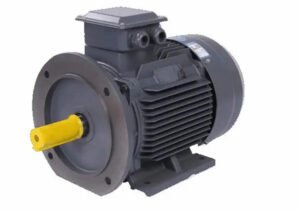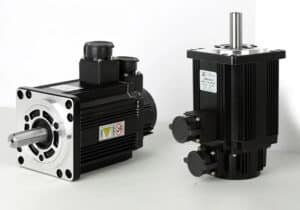High-voltage motors and low-voltage motors are widely used, bringing a lot of convenience to our production life, many friends have been confused about the difference between the two and the difference, resulting in many times the wrong choice. So what is the difference between high voltage motors and low voltage motors? Hope it can help you!

High voltage motor
If it is AC motor, generally speaking, the rated voltage of 1000V+ is high-voltage motor, less than 1000V is low-voltage motor; if it is DC motor, the rated voltage of 1500V+ is high-voltage motor, less than 1500V is low-voltage motor.
Different rated voltage, different starting and working current, the higher the voltage, the smaller the current; motor insulation and withstand voltage is different, the motor winding wire is also different, the same power of the motor, high voltage motor line is smaller than low voltage, the use of cable is also different.
High-voltage motor and low-voltage motor difference:
1. The insulation material of the coil is different.
For low-voltage motors, the coil mainly uses enameled wire or other simple insulation, such as composite paper. The insulation of high-voltage motor usually adopts multi-layer structure, such as powder mica tape, which has more complex structure and higher degree of voltage resistance.
2, for the difference in heat dissipation structure, low-voltage motors mainly use coaxial fans to directly blow air for heat dissipation. Most high-voltage motors have independent heat sink.
3, the bearing structure is different. Low-voltage motors usually have a set of bearings at the front and rear, while high-voltage motors usually have two sets of bearings at the shaft extension end, which is because the load is larger. The number of bearings at the non-shaft extension end depends on the load condition, especially for large motors with sliding bearings.
Advantages of high voltage motor:
1、High voltage motors can do larger power, reaching thousands or even tens of thousands of kilowatts.
2. For large-capacity motors, the power supply and distribution equipment of high-voltage motors is less than the overall investment of low-voltage motors, and the line loss is small, which can save certain power consumption.
Disadvantages of high voltage motor:
1、The cost of winding is relatively high, and the cost of related insulation materials will also be high.
2、Insulation treatment process is difficult and labor cost is more.
3, the requirements for the use of the environment than low-voltage motors are much more stringent.

BLDC Brushless DC Motor
What is the difference and difference between high voltage motors and low voltage motors? What are the advantages and disadvantages of high voltage motors? Vacuz has made a brief explanation of the above, I hope this knowledge can help you!
WhatsApp/Wechat: +86 13075286997
E-mail: sales@vacuz.com





